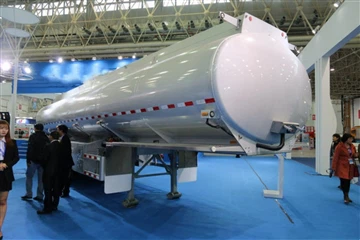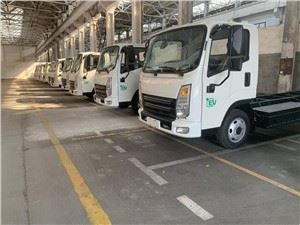Understanding Oil Tank Trucks: Essential Insights and Practical Tips

In the transportation industry, oil tank trucks play a crucial role in the safe and efficient delivery of liquid fuels. From diesel and gasoline to heating oil and more, these vehicles are the backbone of fuel logistics around the world. This article explores the various aspects of oil tank trucks, from their construction and operation to safety considerations and environmental impacts. Whether you’re a logistics professional, an industry enthusiast, or simply curious about how these vehicles work, this comprehensive guide is for you.
What is an Oil Tank Truck?
An oil tank truck is a specialized vehicle designed to transport liquid fuels and other petroleum products. Typically featuring a large, cylindrical tank mounted on a truck chassis, these vehicles are engineered to meet the demands of transporting hazardous materials safely. They vary in size and capacity depending on the cargo and the regulations in the area they serve.
Types of Oil Tank Trucks

Different types of oil tank trucks cater to varying transport needs. Here are some common types:
1. Single-Walled Tank Trucks
Single-walled tank trucks are the most basic type, consisting of only one layer of material. They are generally lighter and less costly but offer minimal protection against leaks and spills.
2. Double-Walled Tank Trucks

Double-walled tank trucks feature an outer wall surrounding the fuel tank, providing added safety. This design minimizes the risk of environmental contamination in case of a tank rupture.
3. Compartment Tank Trucks
Compartment tank trucks allow for the transport of multiple types of liquids simultaneously. These tanks have separate compartments, facilitating deliveries of different products without cross-contamination.
4. Portable Tank Trucks
Portable tank trucks are equipped with removable tanks, designed for quick filling and emptying, making them ideal for temporary transport needs such as construction sites.
The Construction of Oil Tank Trucks
The construction of oil tank trucks is a meticulous process that takes safety, durability, and efficiency into account. Key components include:
Tank Material
Oil tanks are typically made from materials like steel or aluminum. Steel offers enhanced strength and is used for heavier fuels, whereas aluminum is lighter, improving fuel efficiency but at a cost of durability.
Safety Features
Modern oil tank trucks are equipped with various safety features such as:
- Vapor Recovery Systems: These reduce harmful emissions during loading and unloading.
- Overfill Protection: This prevents tanks from exceeding their capacity, minimizing spill risks.
- Emergency Shut-Off Valves: These quickly isolate the tank from the truck in case of emergencies.
Chassis and Axles
The chassis of an oil tank truck provides the necessary support for heavy loads. It is crucial that the axles are appropriately rated to handle both the weight of the tank and its contents.
Operations of Oil Tank Trucks
The operation of an oil tank truck involves several critical processes, including loading, transportation, and unloading of petroleum products.
Loading Process
During the loading process, safety measures must be strictly adhered to. This involves using proper hoses and connections, checking for leaks, and verifying the compatibility of the fuel type being loaded.
Transportation
Transportation requires skilled drivers who are certified to operate hazardous material vehicles. They must be aware of routing restrictions, weight limits, and other regulations governing the transport of liquid fuels.
Best Practices for Safe Transport

- Regular Vehicle Maintenance: Keeping the truck in optimal condition can prevent breakdowns and accidents.
- Adherence to Speed Limits: Drivers should always follow posted speed limits, especially in residential areas and near schools.
- Frequent Monitoring: Drivers should continually check their mirrors and gauge their loads for any potential issues.
Unloading Process
Unloading is as critical as loading. Drivers must take precautions to ensure the tank is securely positioned, and delivery areas are clear of obstructions. They should also perform a double-check of the delivery paperwork.
Safety Considerations for Oil Tank Trucks
Safety is paramount in the operation of oil tank trucks due to the hazardous nature of the materials transported. Here are key safety considerations:
Regulatory Compliance
Oil tank truck operators must comply with government regulations, such as those set by the Environmental Protection Agency (EPA) and the Department of Transportation (DOT). These regulations govern issues like vehicle construction, hazardous materials handling, and environmental protection.
Training and Certification
Drivers must undergo specialized training to understand the risks involved with transporting fuel. Certification programs emphasize safety procedures, emergency response, and the proper handling of hazardous materials.
Emergency Preparedness
In case of a spill or leak, emergency response protocols should be in place. This includes having spill kits available, knowing local emergency contact numbers, and conducting regular drills.
Environmental Impacts of Oil Tank Trucks
The environmental impact of oil tank trucks is a significant concern in the transportation industry. Addressing these impacts is essential for sustainability.
Spills and Leaks
One of the most concerning risks associated with oil tank trucks is spills and leaks, which can lead to severe environmental damage. Regular maintenance and inspections can minimize this risk.
Green Technologies and Innovations
Emerging technologies are helping to reduce the environmental footprint of oil tank trucks. Some examples include:
- Biofuels: Some companies are exploring the use of biodiesel, which is less harmful to the environment.
- Alternative Energy Vehicles: Electric or hybrid trucks are being developed to reduce greenhouse gas emissions.
Choosing the Right Oil Tank Truck
Selecting the appropriate oil tank truck is crucial for logistics companies. Various factors come into play when making this decision.
Capacity Needs
Understanding the required load capacity is vital. Choose a truck that meets your delivery volume needs without being oversized, which could lead to inefficiency.
Type of Fuel Transported
Consider the type of fuel you will be transporting. Different fuels may require specific tank designs or materials to ensure safety.
Regulatory Requirements
Familiarize yourself with local and national regulations governing oil transport, which can influence the choice of the tank truck.
Common Questions (FAQ)
1. How much fuel can an oil tank truck hold?
The capacity of oil tank trucks typically ranges from 1,000 to 11,000 gallons, depending on the truck’s size and construction.
2. What should drivers know about transporting oil?
Drivers must understand regulations, safety procedures, vehicle maintenance, and emergency response protocols. Proper training and certification are essential.
3. How can spills from oil tank trucks be managed?
Spills can be managed through preventive maintenance, using spill kits, and having an emergency response plan that includes notifying local authorities.
4. Why are double-walled tanks safer than single-walled tanks?
Double-walled tanks provide an additional barrier to contain leaks, significantly reducing the risk of environmental contamination compared to single-walled tanks.
5. What are the benefits of using green technologies in oil tank trucks?
Green technologies, such as biofuels and electric vehicles, reduce emissions and environmental impact, contributing to a more sustainable transportation industry.
6. How often should oil tank trucks be inspected?
Regular inspections should be conducted every six months, with more comprehensive annual inspections to ensure ongoing safety and compliance.
This article serves as a thorough resource for understanding oil tank trucks, providing critical insights for operators and stakeholders in the transportation industry.
